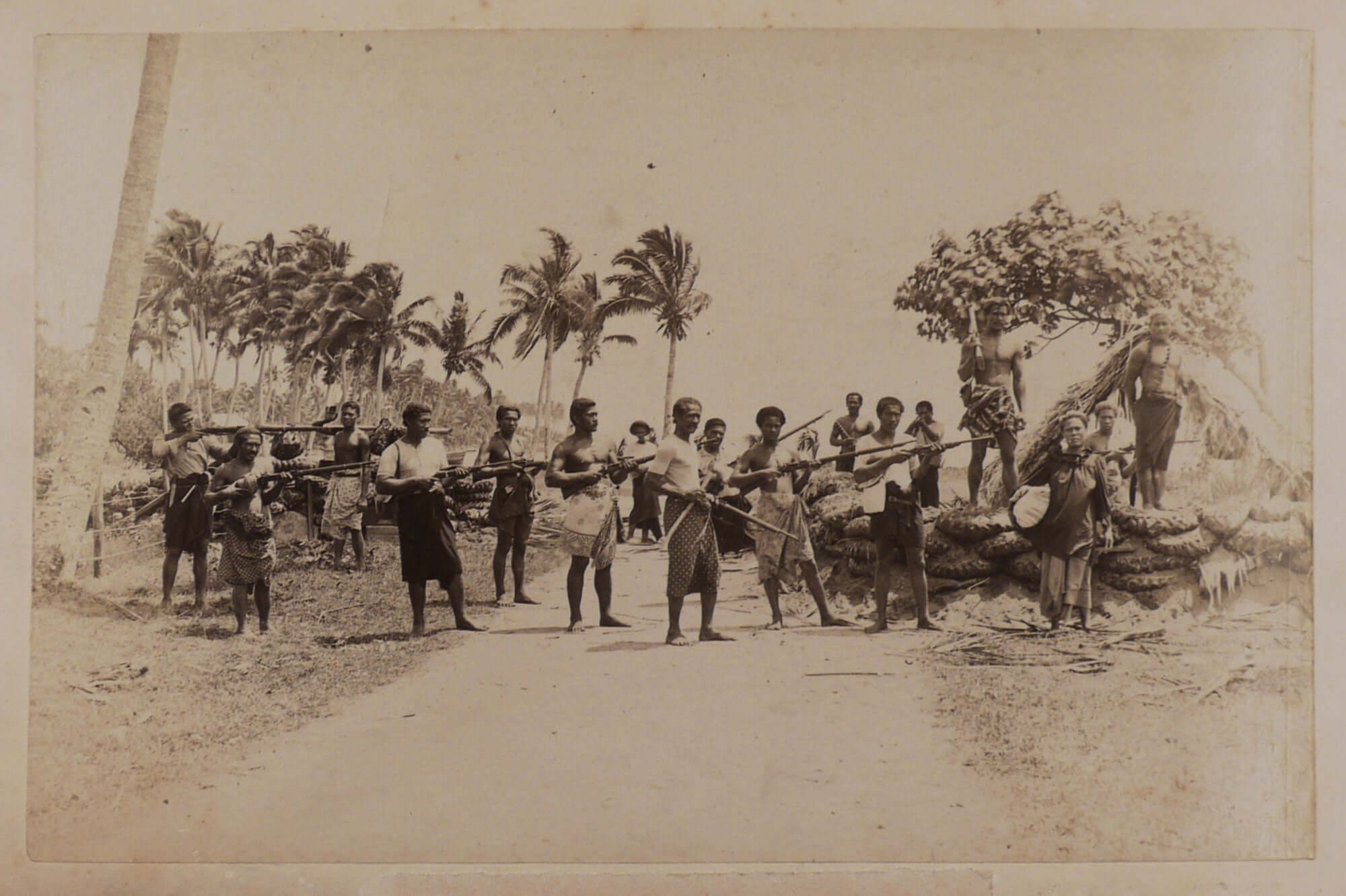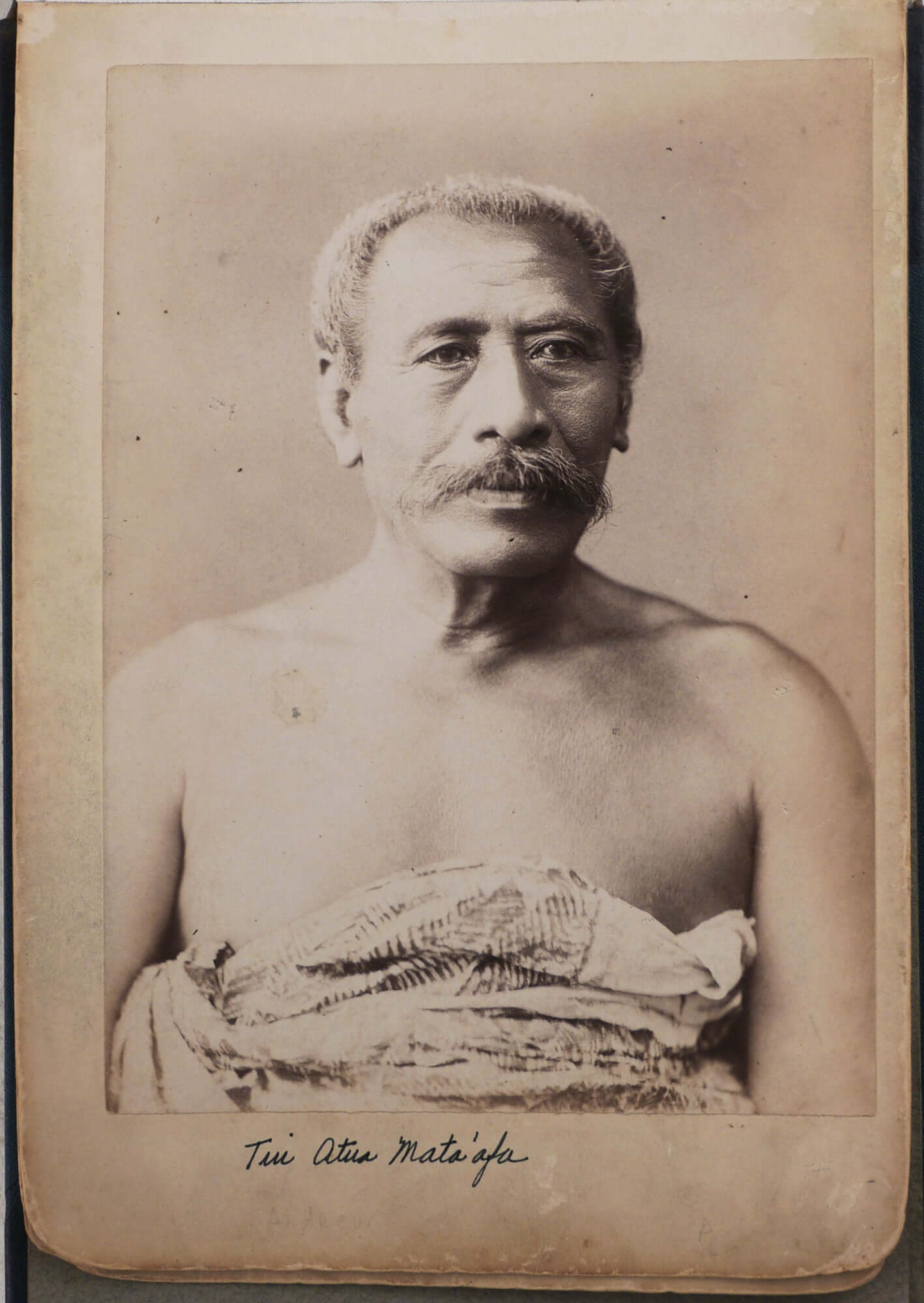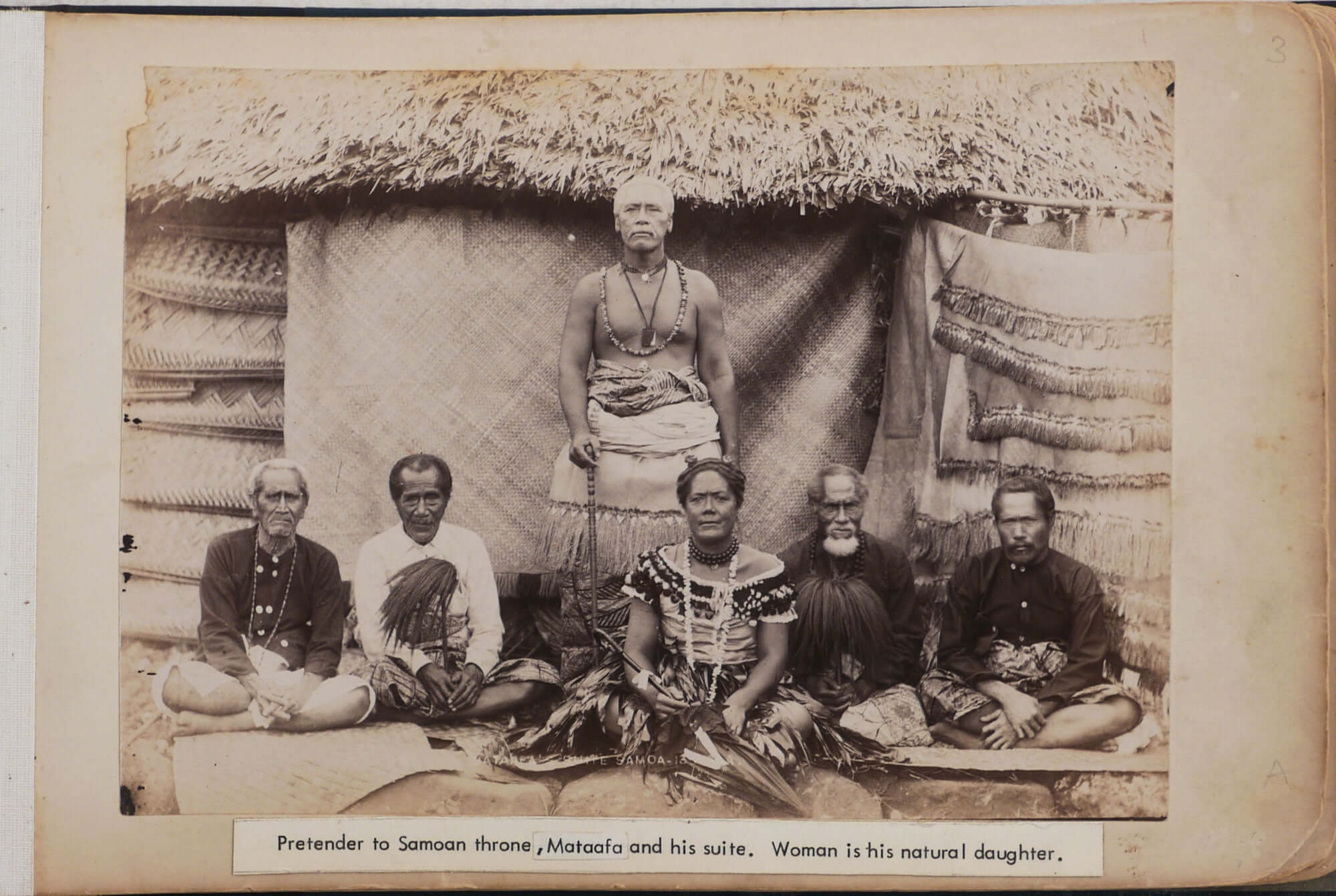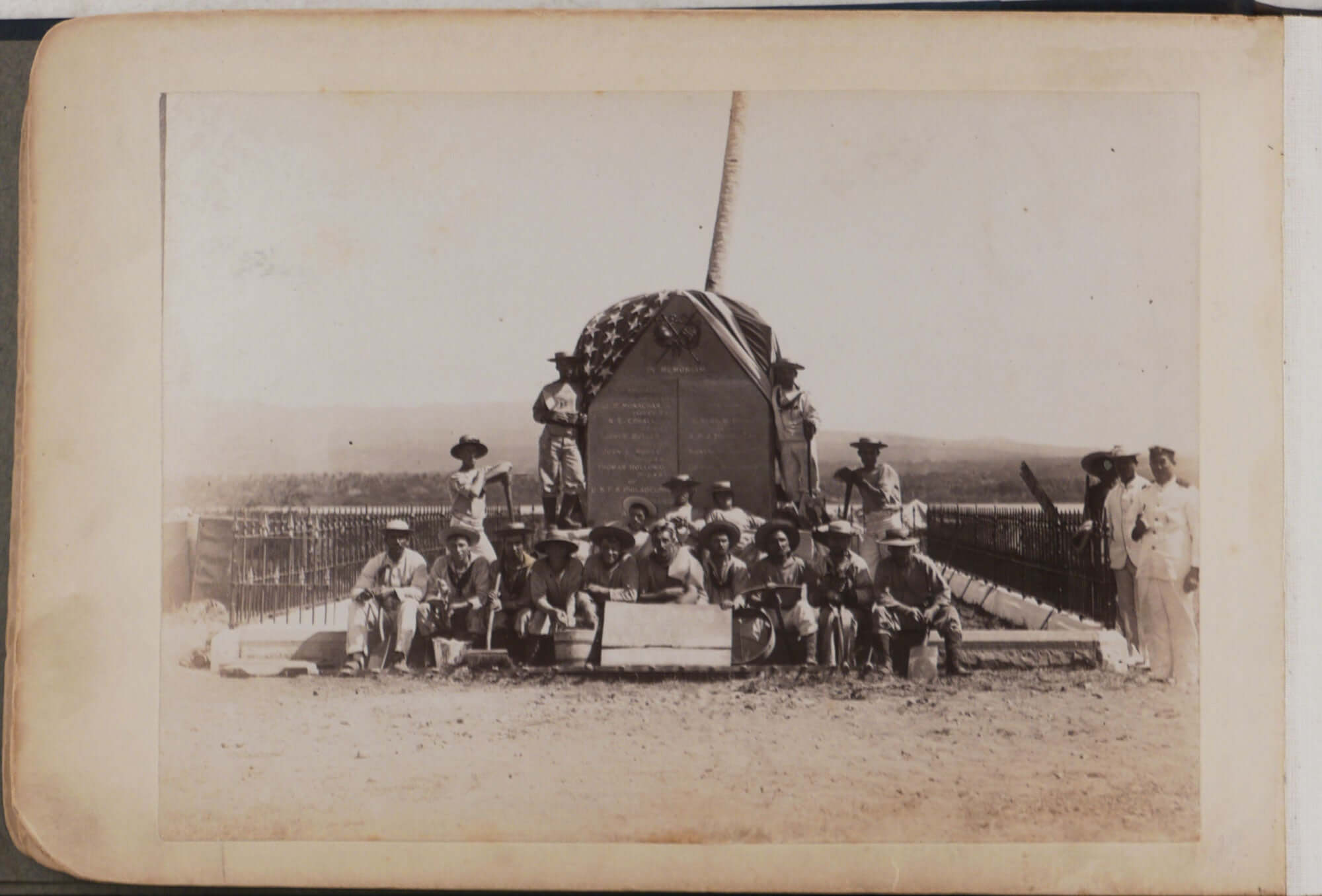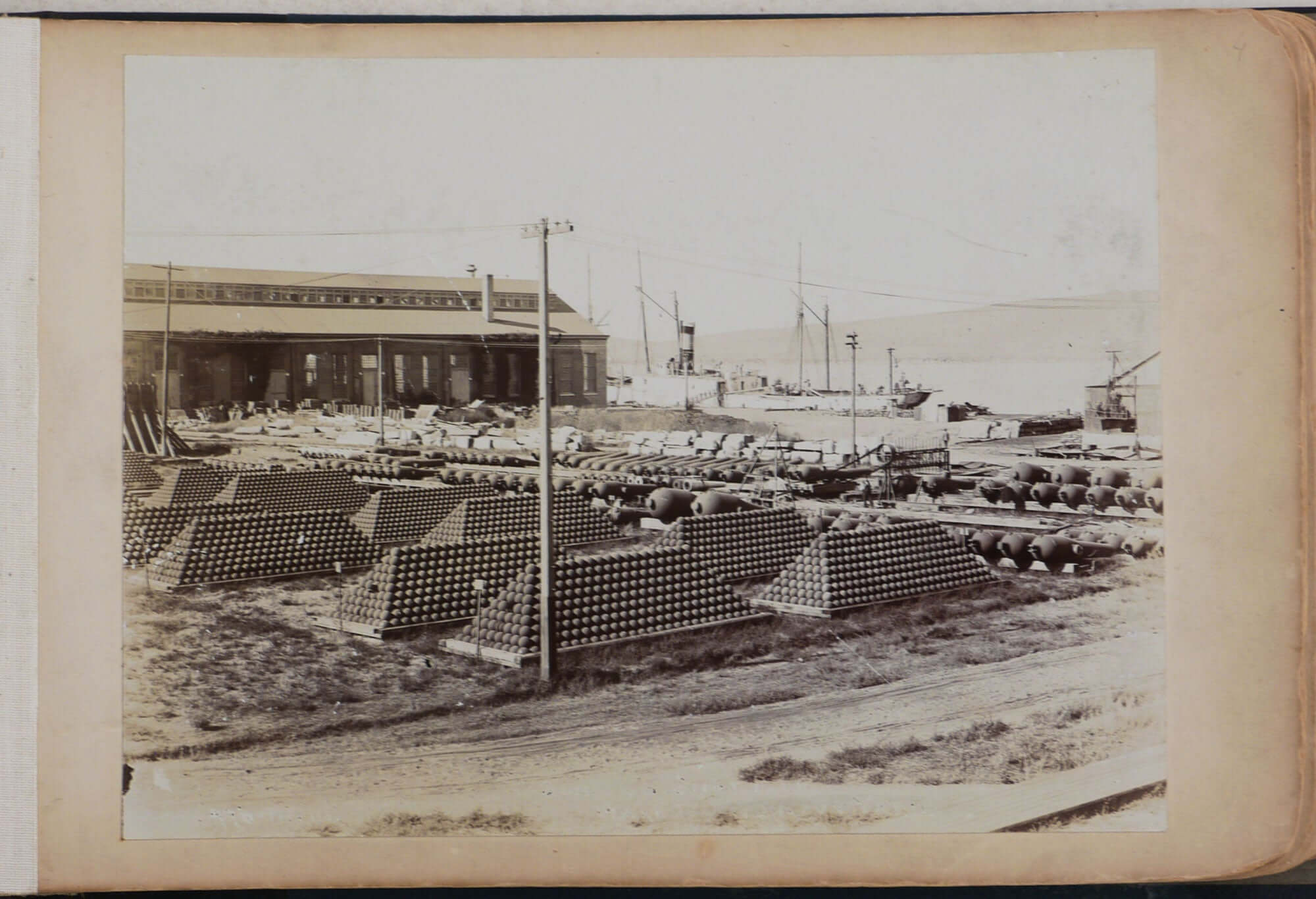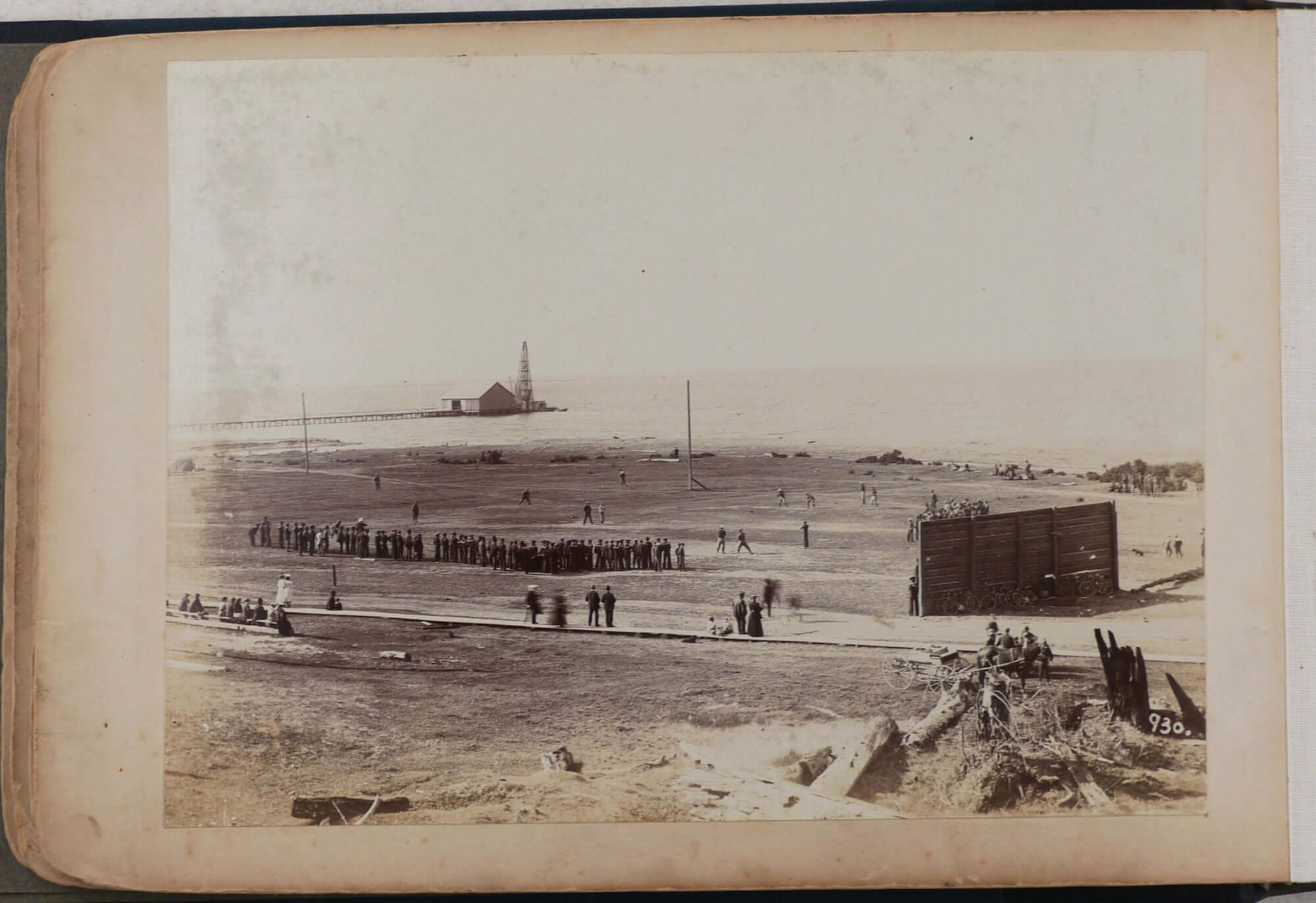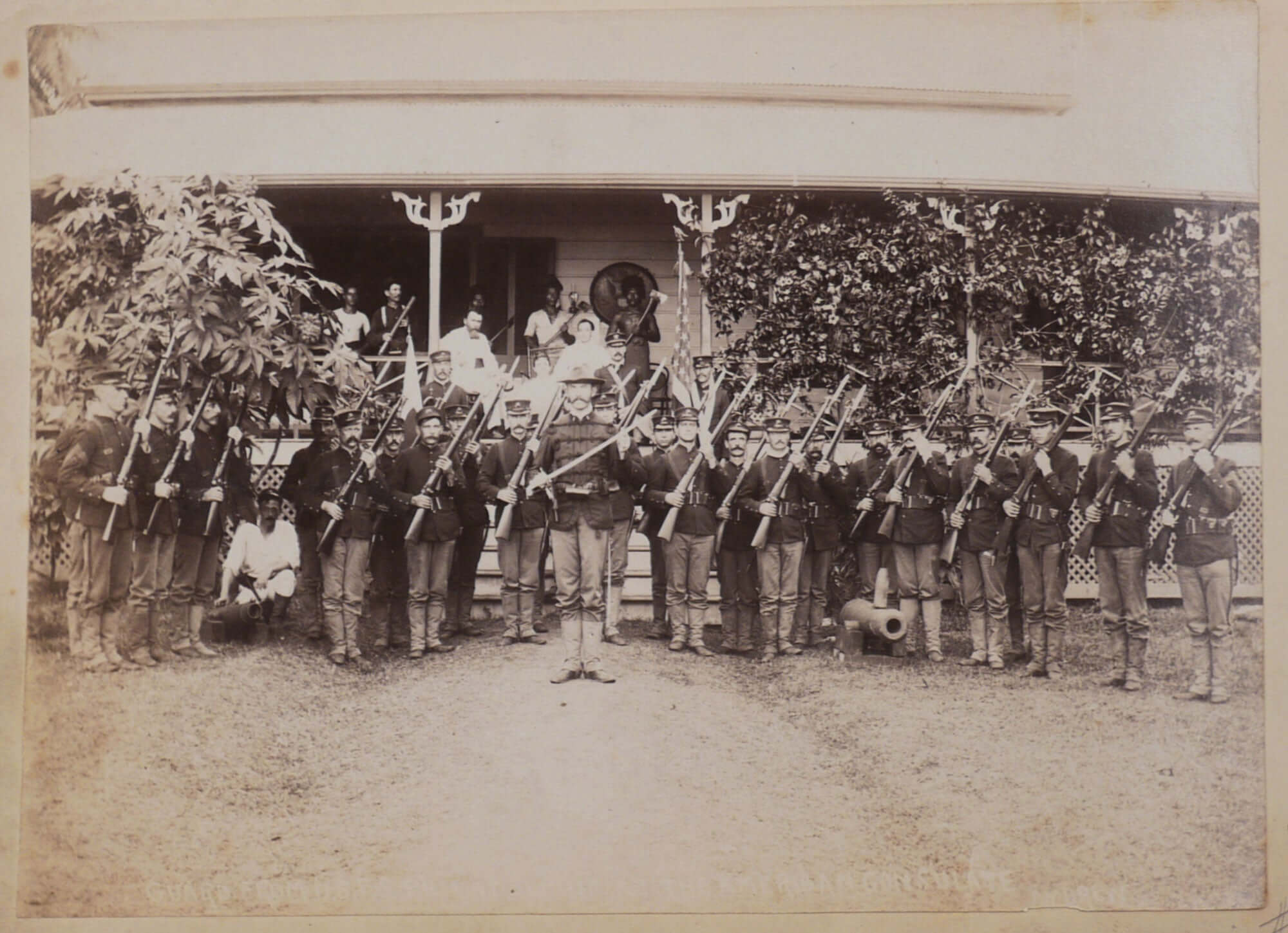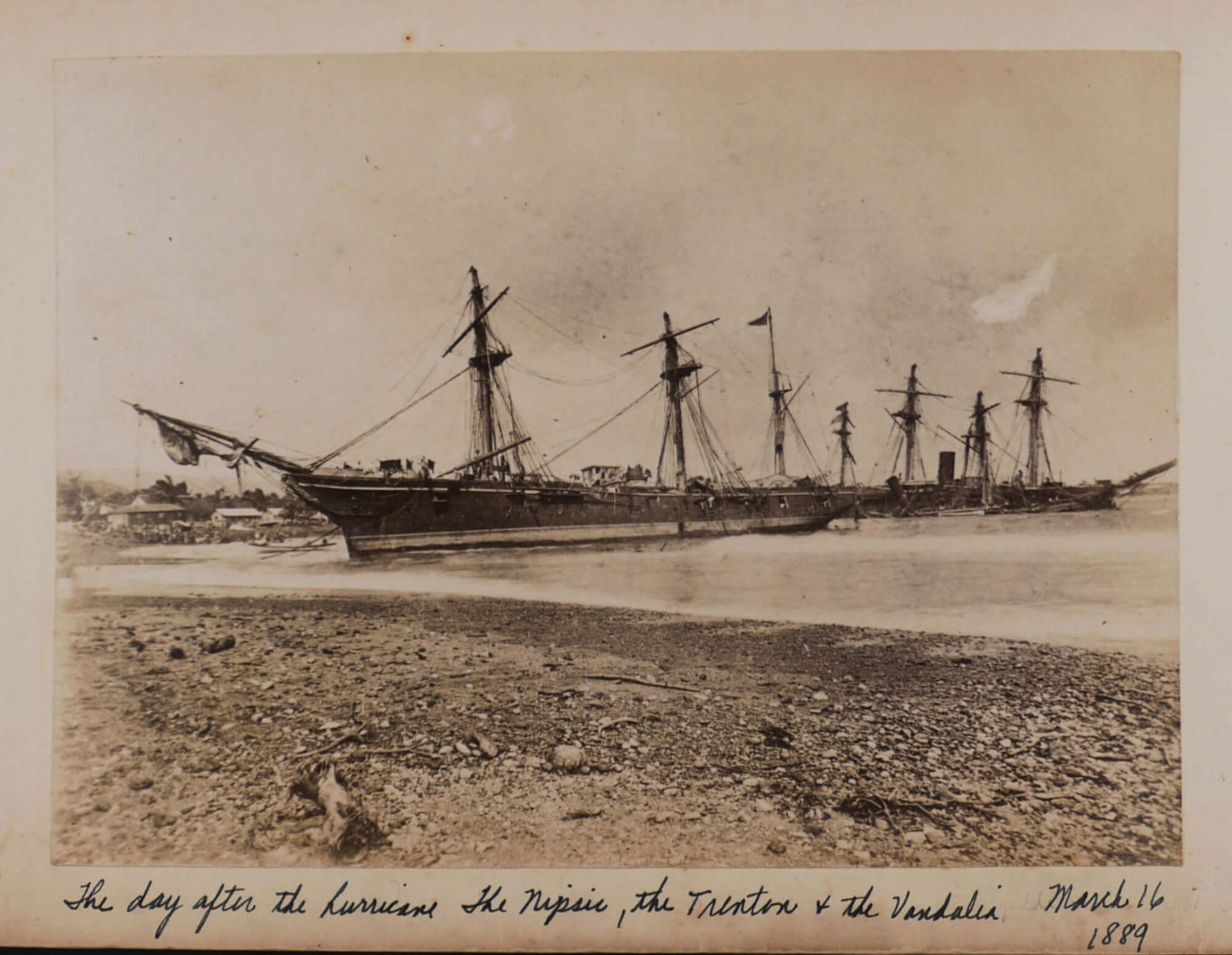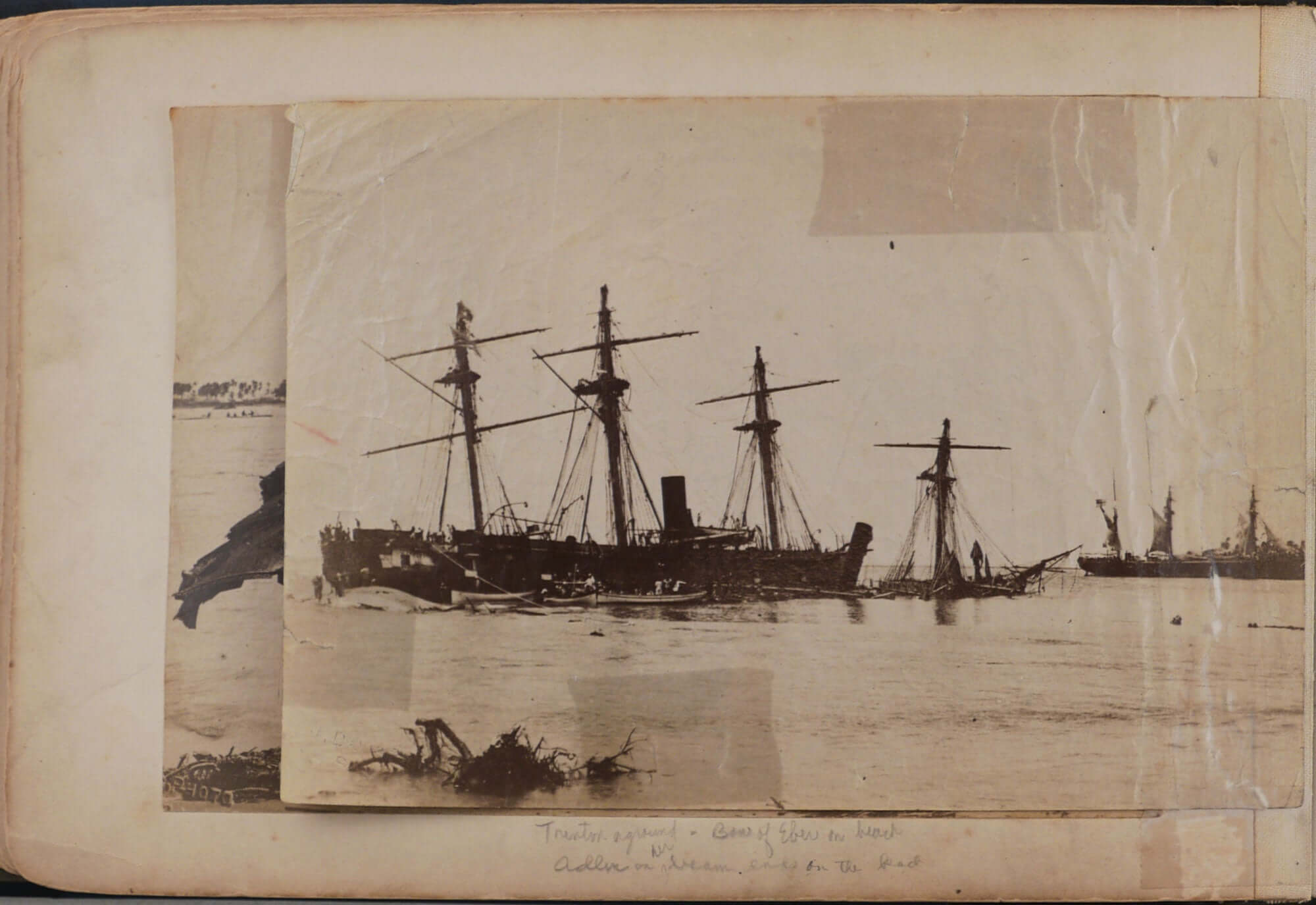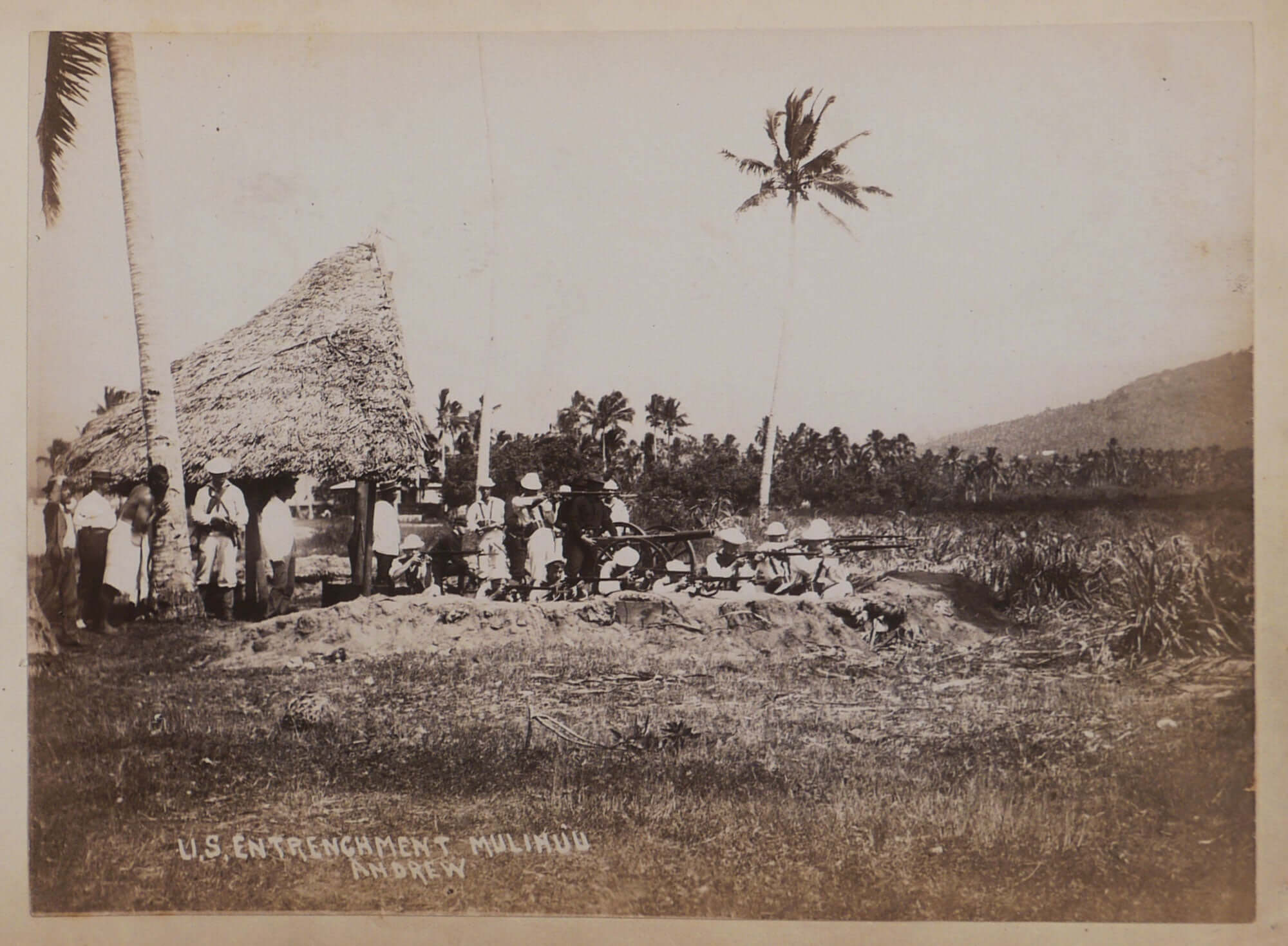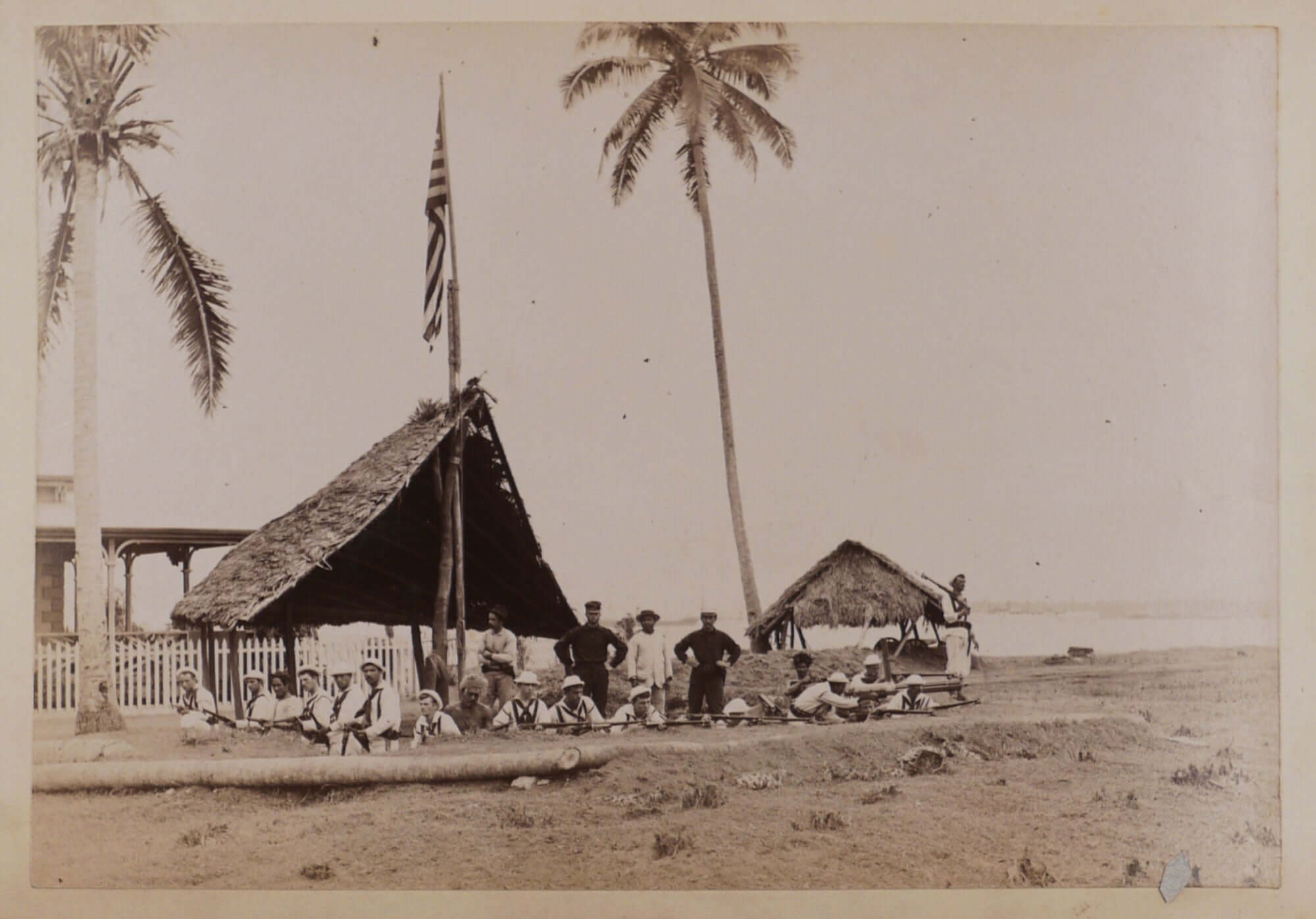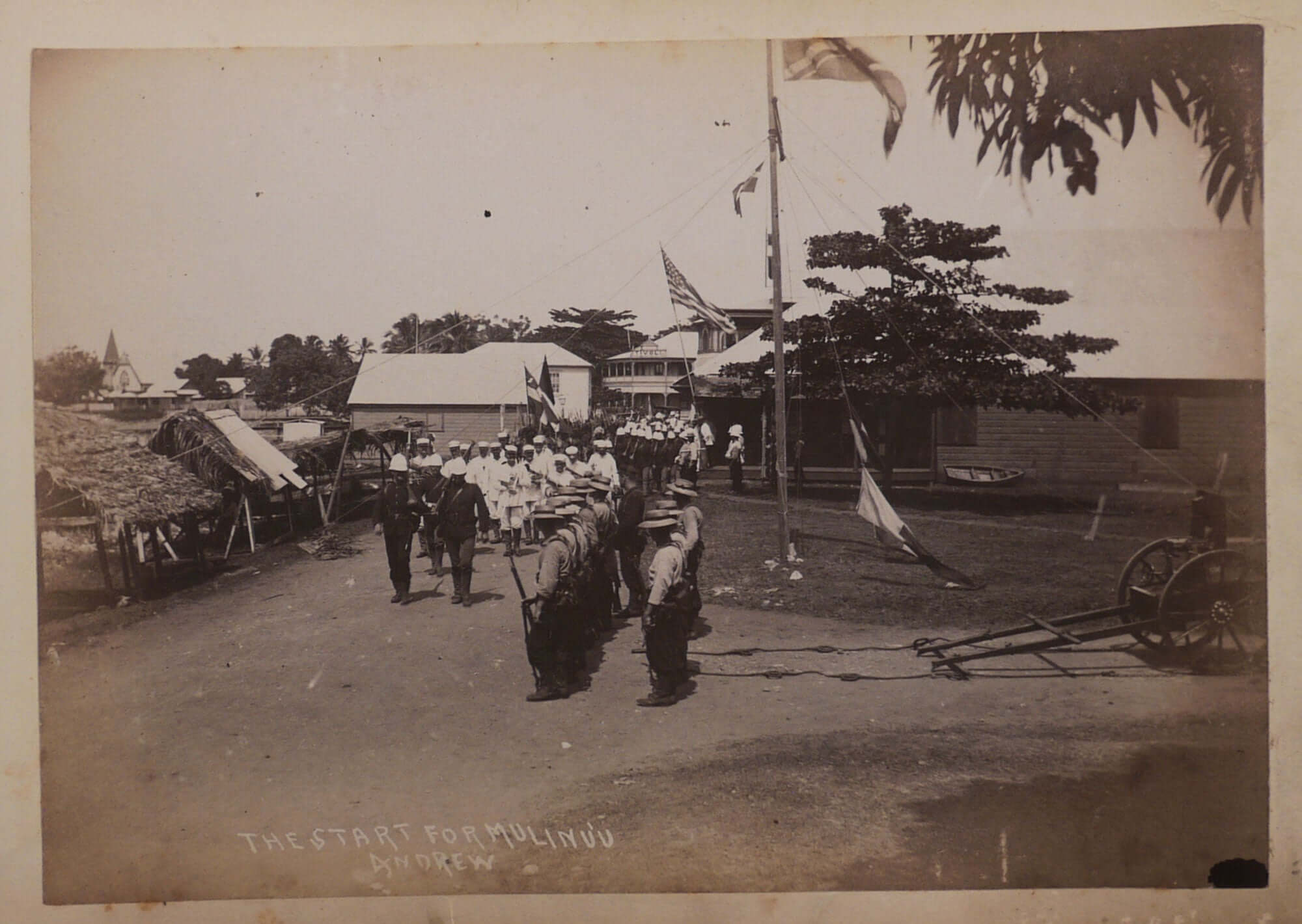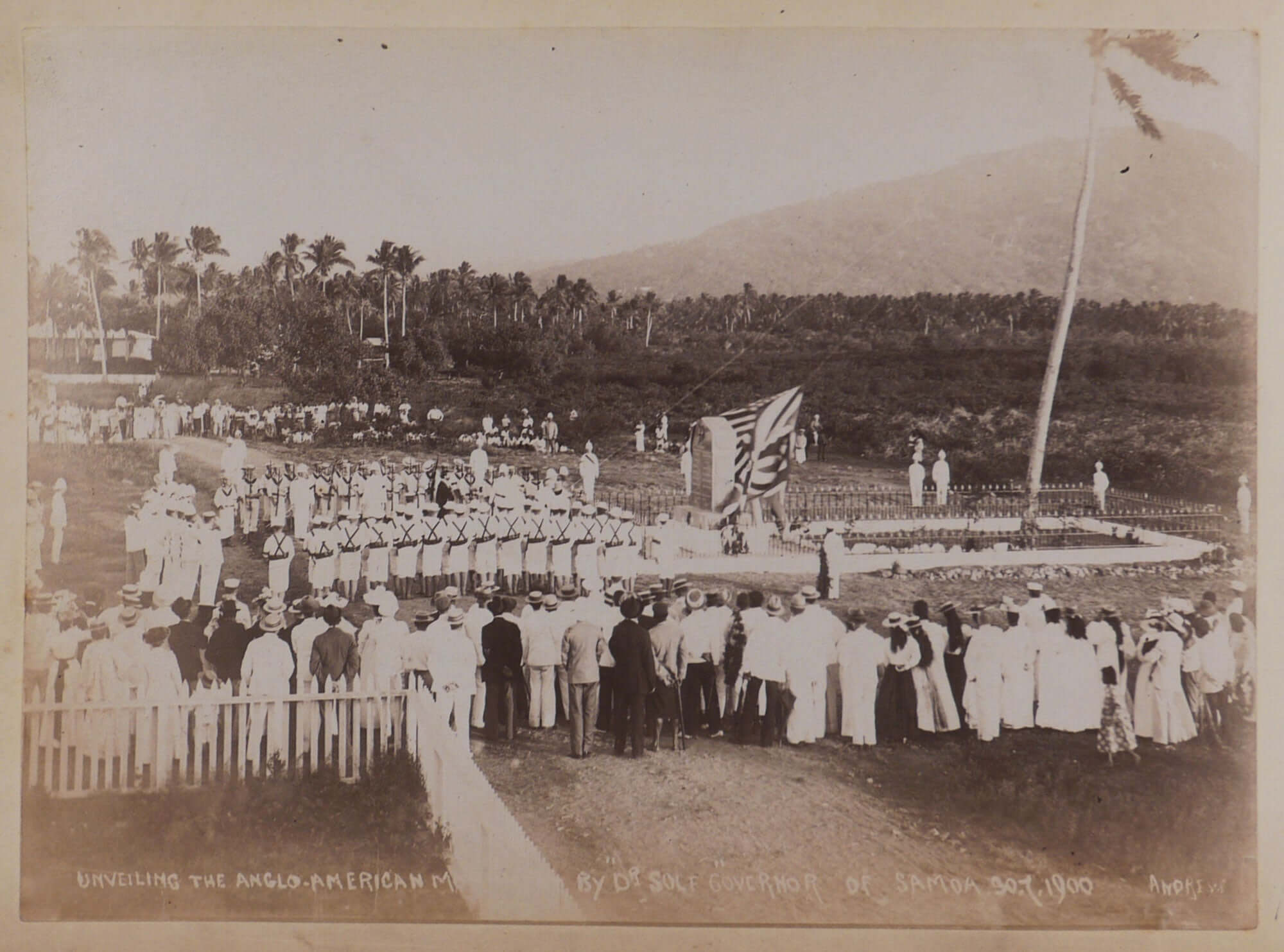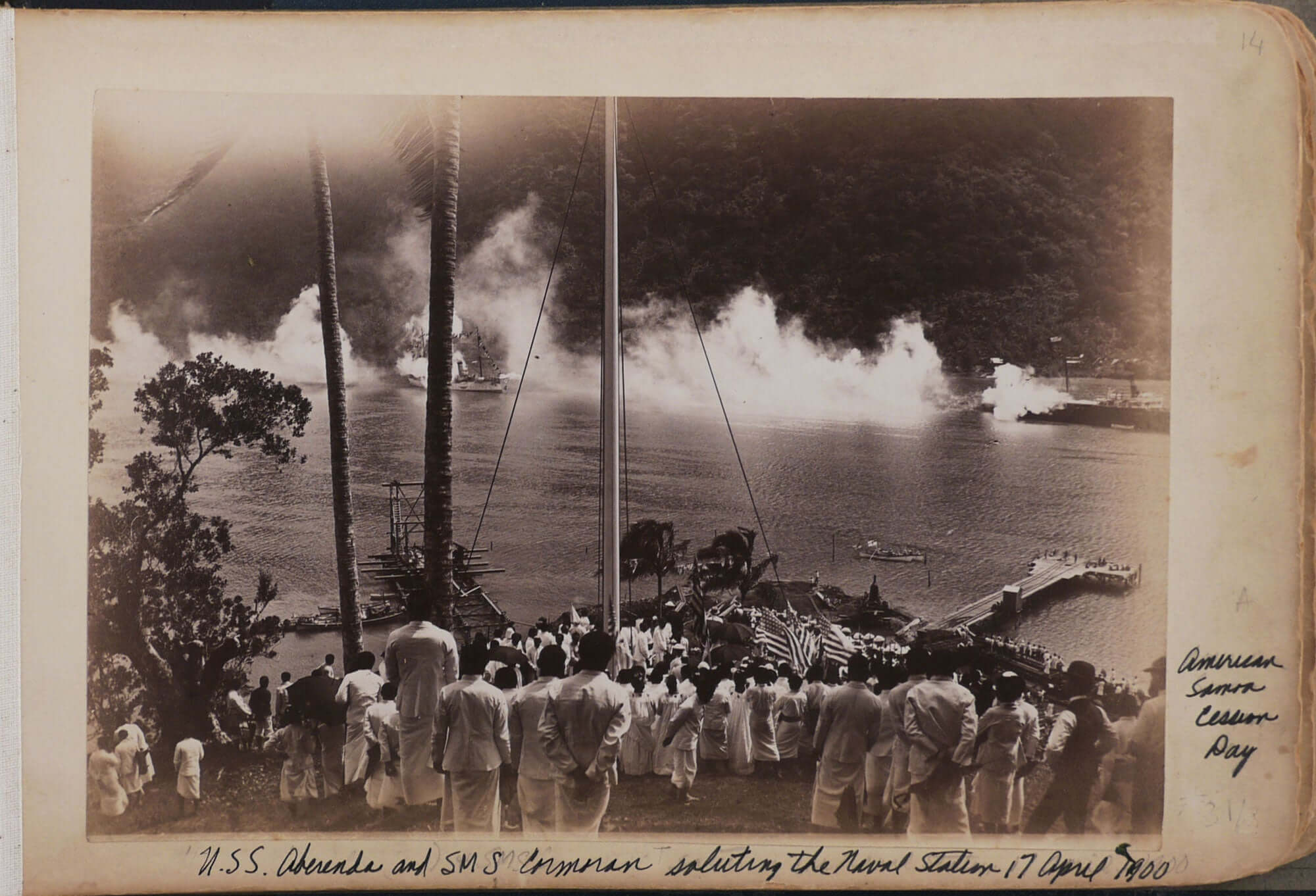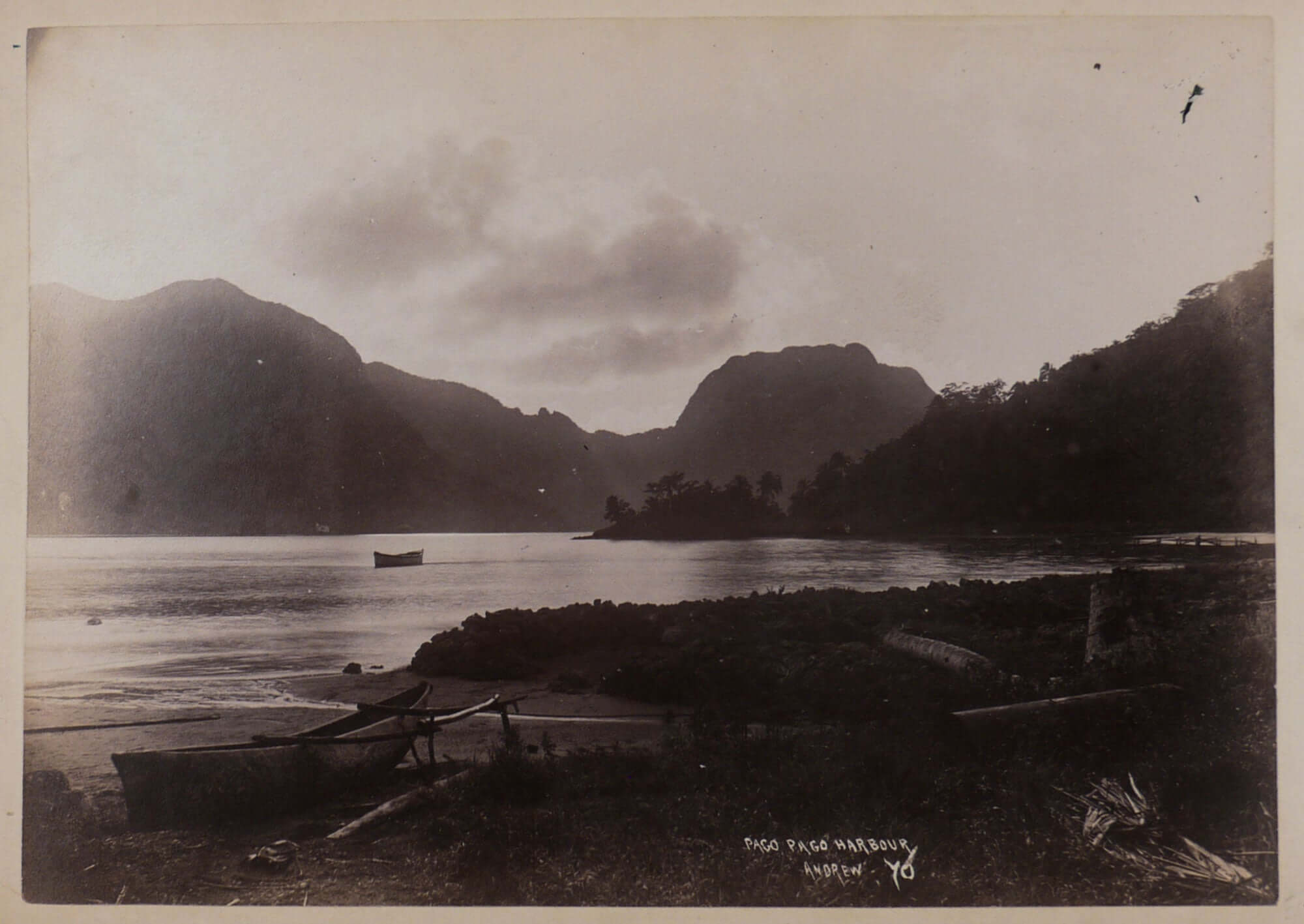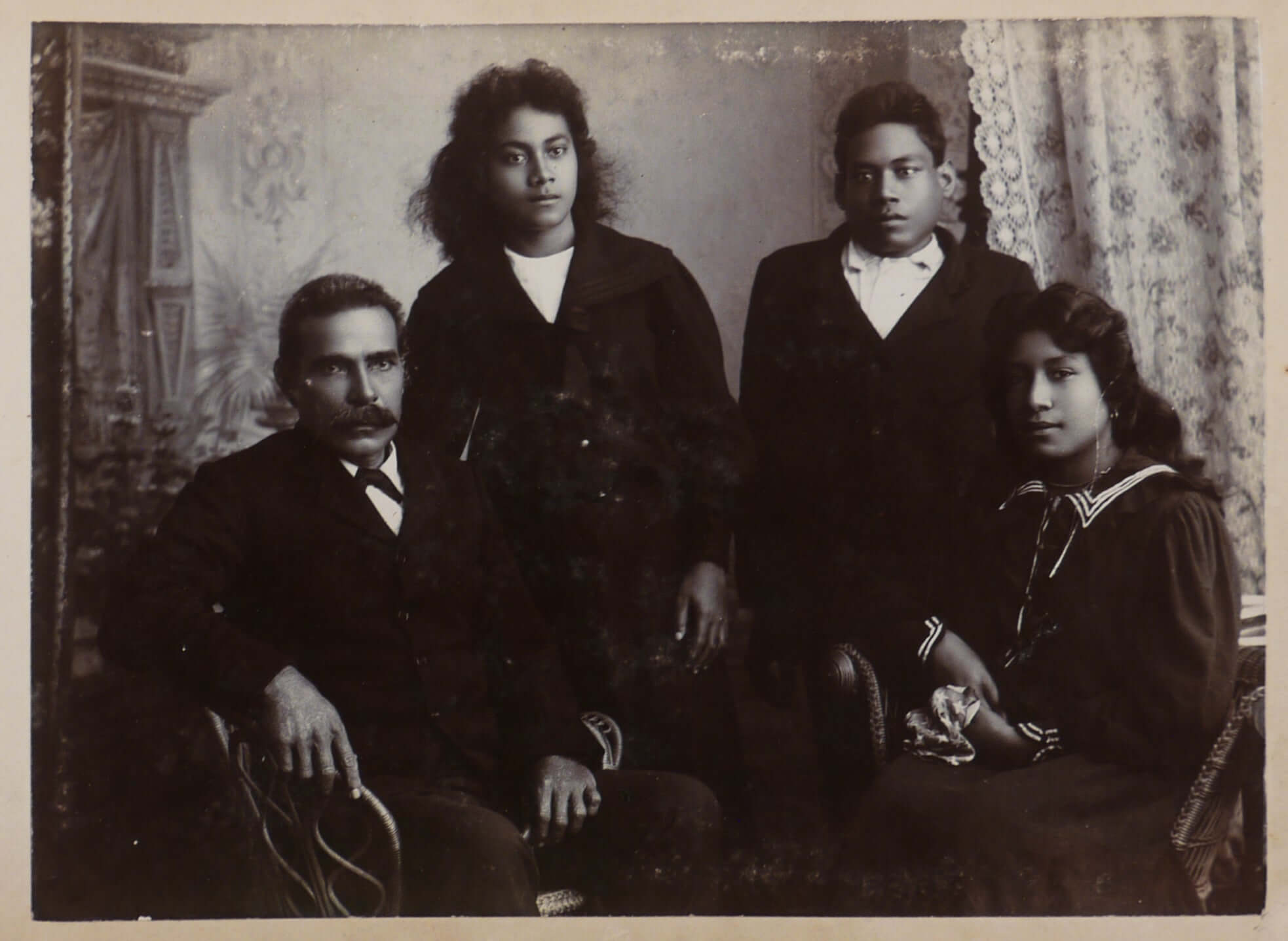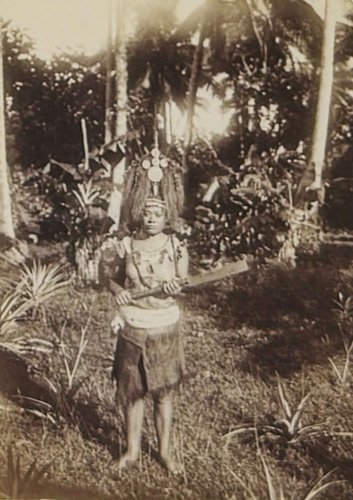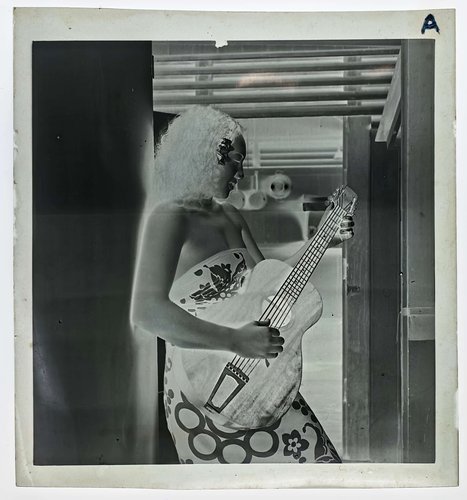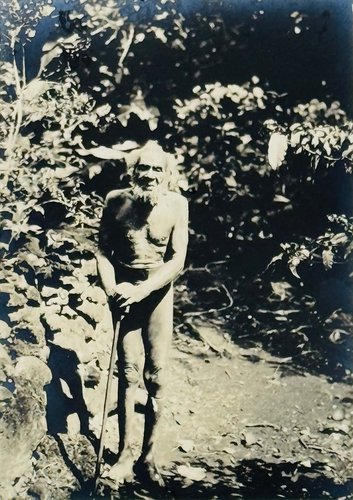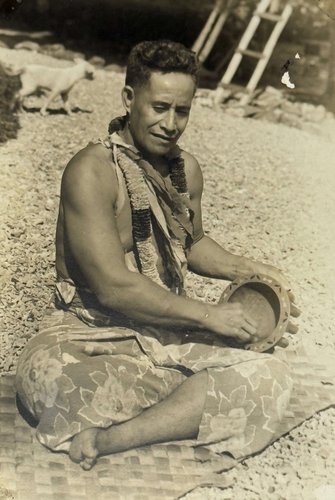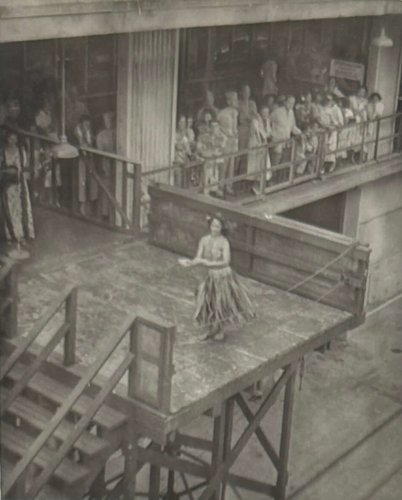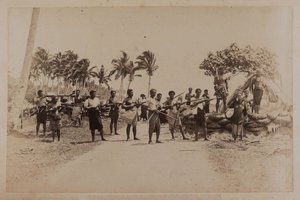
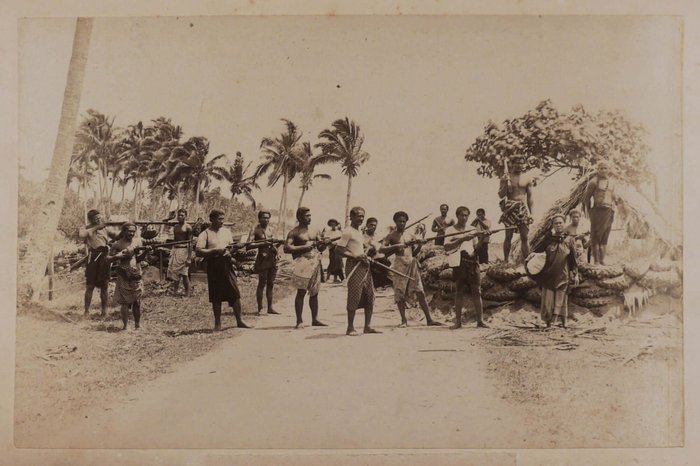
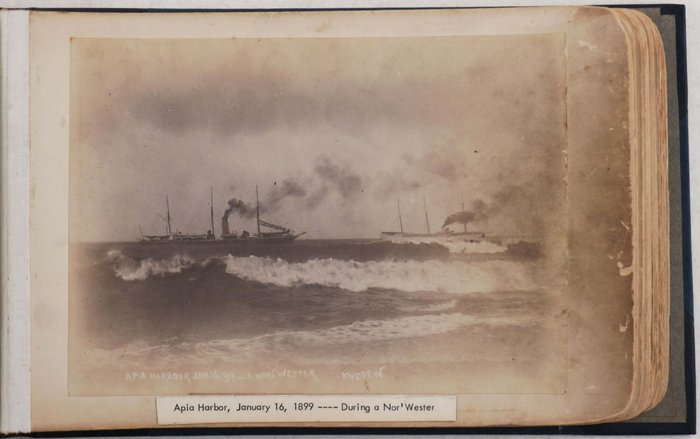


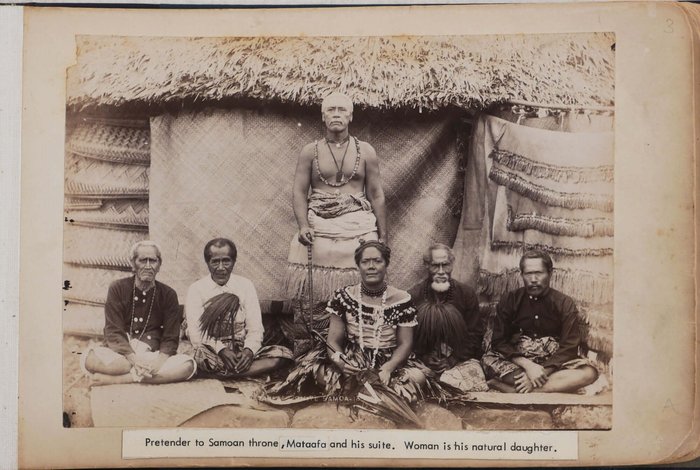
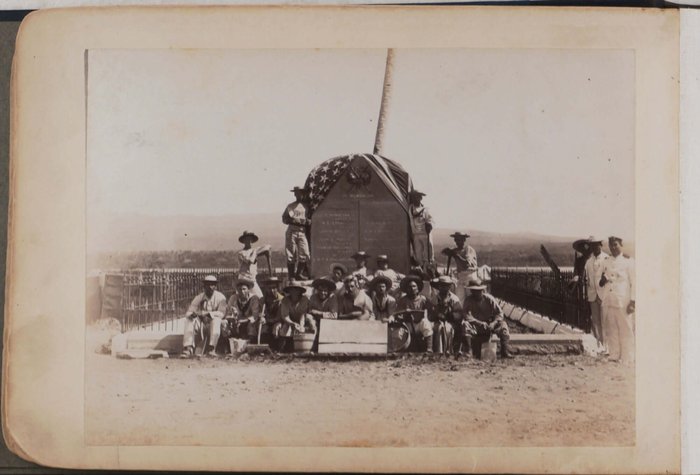
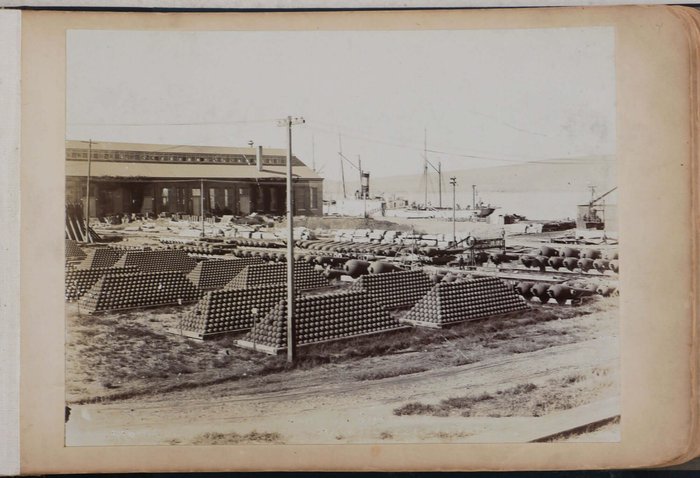
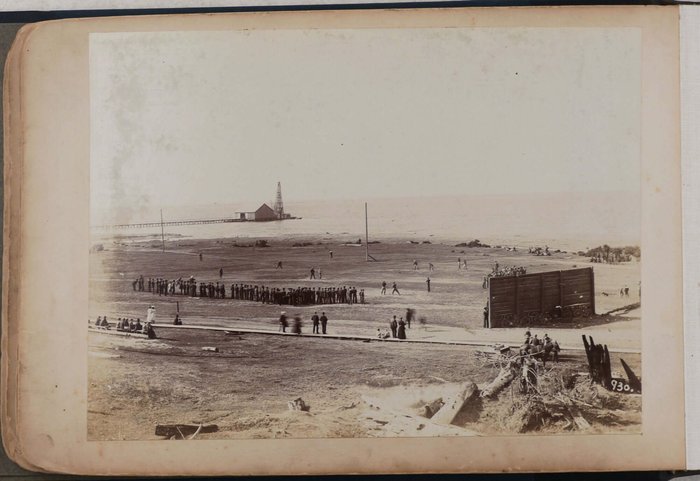

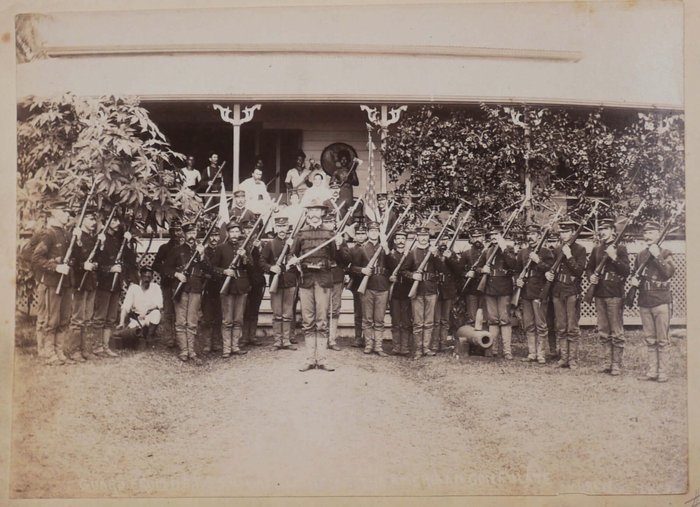


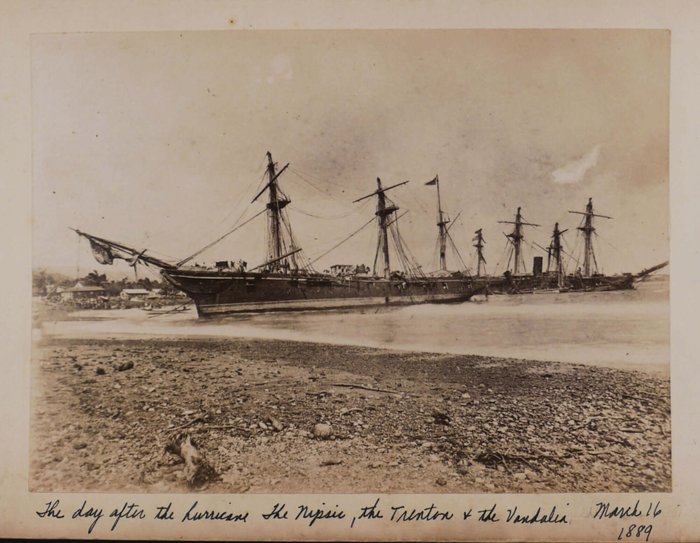
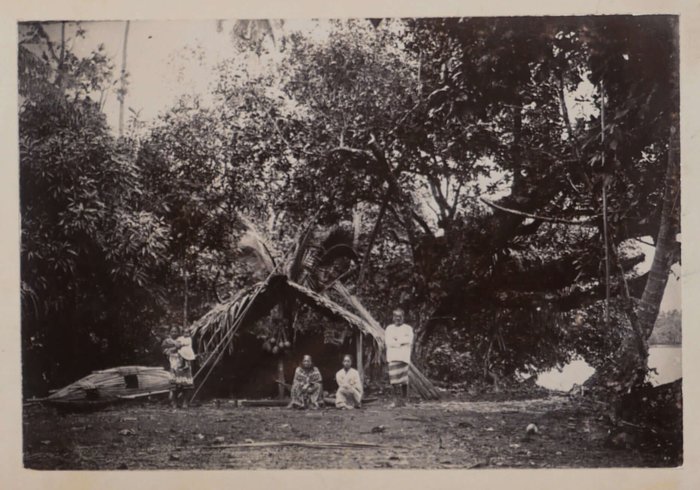
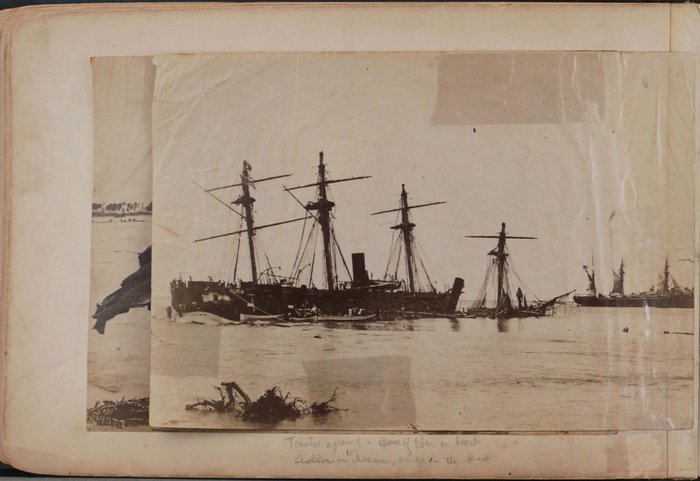

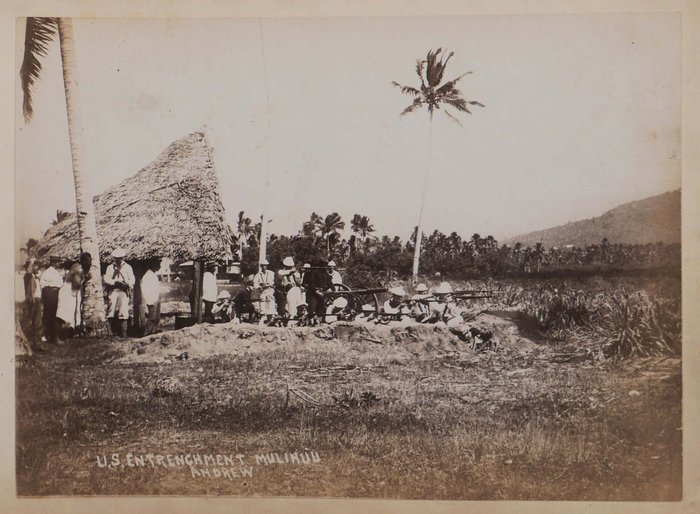

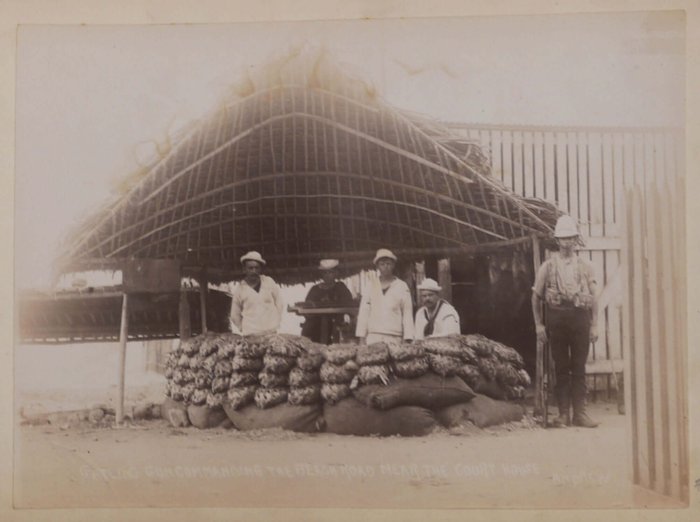
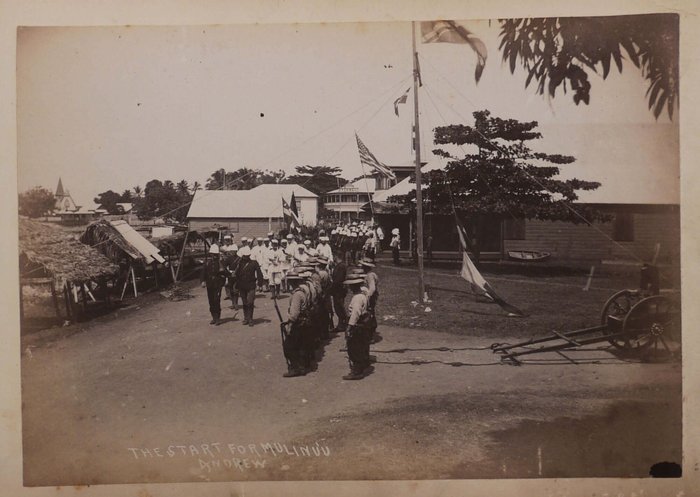

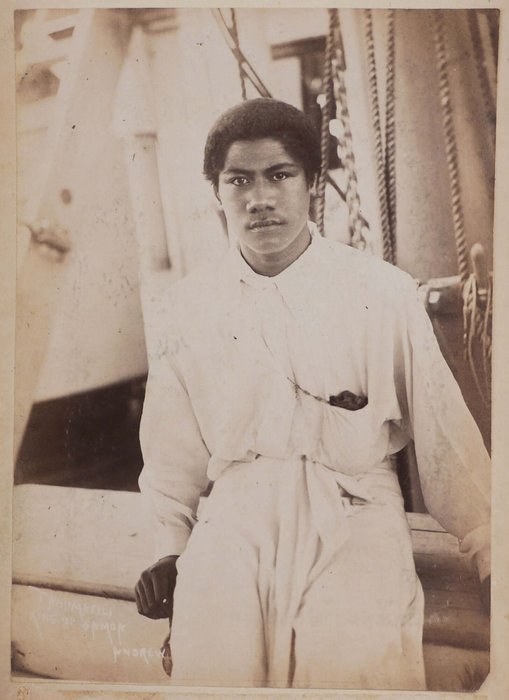
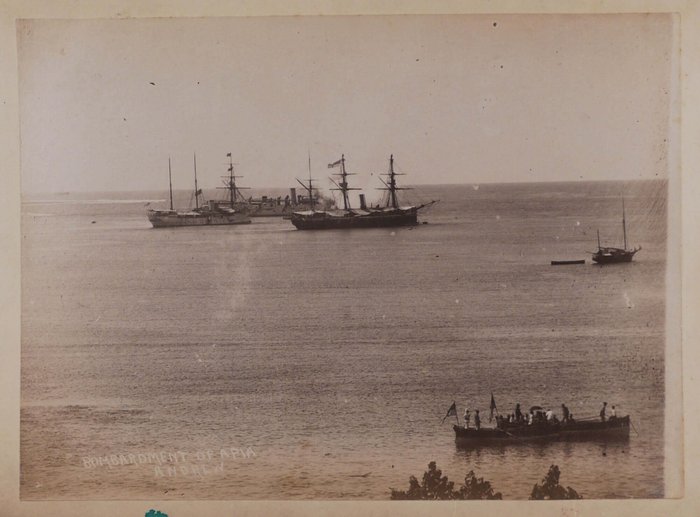
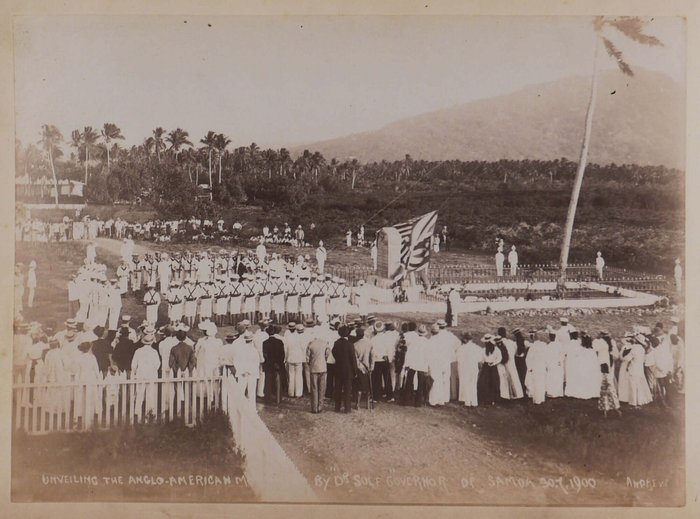
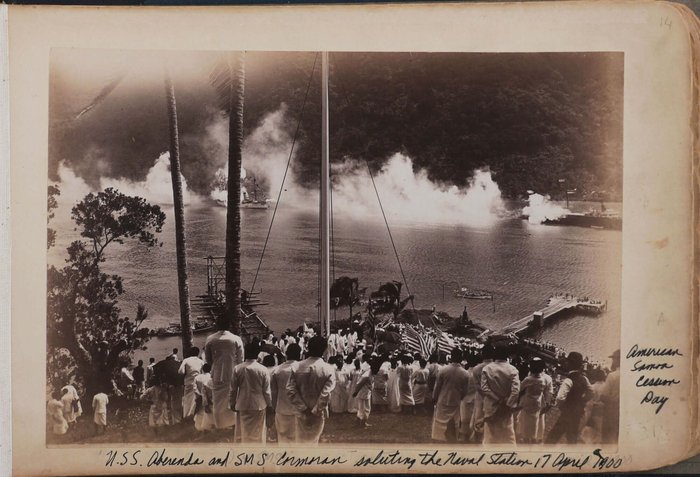
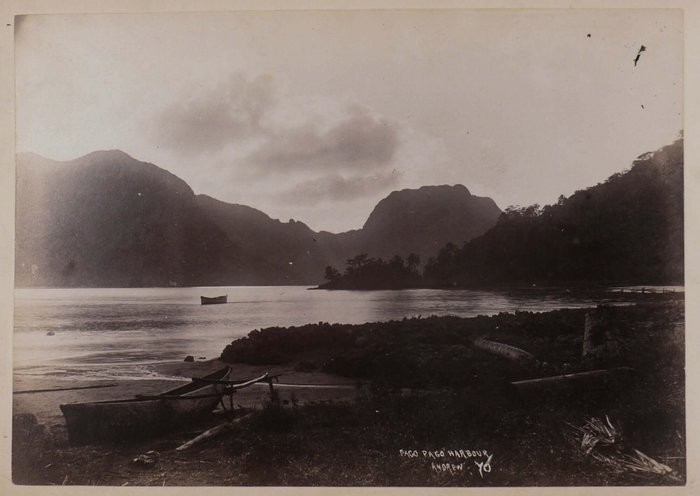
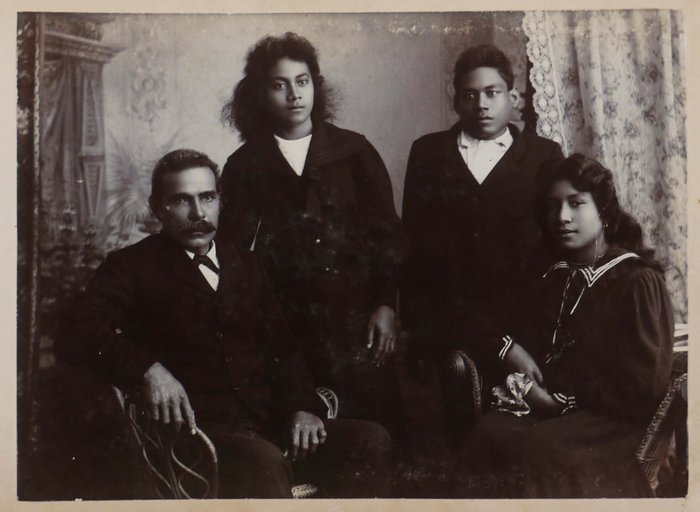
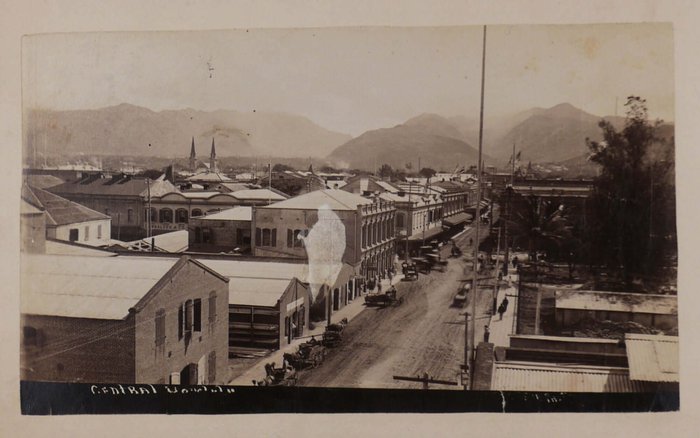

#PA90
Ca. 1889-1900
Oblong Folio (ca. 18x27,5 cm). 17 card stock leaves. With 35 original photographs (thirty-one albumen and four gelatin silver), mostly mounted on the album leaves (one image tipped in). The photos are from ca. 15x20,5 cm (5 ¾ x 8 in) to ca. 11,5x16,5 cm (4 ½ x 6 ½ in). Ca. fifteen images are captioned, signed or numbered in negative; one photo with a blind stamp of John Davis in the left lower corner; eight photos with period ink or pencil captions on the mounts or on versos (the tipped-in image); two photos with later typed captions on paper labels, mounted under the photos. Period style navy blue half morocco with blue cloth boards and decorative gilt-tooled borders on both boards and the spine. Mounts slightly age-toned and with minor chipping on extremities, a few photos mildly faded, but overall a very good album of strong rare photos.
Attractive collection of large early rare photos of Samoa, related to the events and aftermath of the First (1886-1894) and Second (1898-1899) Samoan Civil Wars, which resulted in the partition of the islands and formation of the American and German Samoa protectorates in February 1900. Most likely compiled by an American (see the spelling of the manuscript and typed captions) – possibly a resident of Samoa or a naval officer who took part in the conflict, the album includes photographs by the noted local studios of Thomas Andrew and John Davis (assisted by Alfred Tattersall).
Eight earlier images depict the aftermath of the notorious Apia Cyclone which struck the harbour of Apia (Upolu Island) on March 15, 1889 and destroyed three American and three German naval ships, killing over 200 crew members and ending the armed standoff between the United States and the German Empire, who struggled for the control of the islands during the First Samoan Civil War. Two photos bear the signature of John Davis (in negative or as a blind stamp) and another five were attributed to him based on the collections of the National Library of New Zealand (see more) and the “Early New Zealand Photographers” online resource.
The photos show “Admiral Kimberly’s flagship Trenton with the Vandalia sunk alongside, 16 March 1899” (ink manuscript caption); “Ships in Apia harbor before the hurricane of March 15, 1899” (ink manuscript caption); two close-up views of the wreck of SMS “Adler;” a view “The day after the hurricane. The Nipsic, the Trenton & the Vandalia. March 16, 1889” (ink manuscript caption); “Trenton aground, bow of Eber on beach, Adler on her beam, ends on the beach” (pencil caption); and two identical images (one mounted and one tipped-in) of “Wrecks of U.S.S. Trenton & Vandalia after hurricane of Mar. 1889. In assistance H.M.S. Calliope who escaped destruction as she looked on her return to Apia after storm.”
The other images (ten signed by Thomas Andrew in negative and at least one attributed to him) date back to the time of the Second Samoan Civil War and the military actions in Apia and the Upolu Island in January-April 1899. The album opens with a view of naval ships in the “Apia Harbour, Jan. 16, 99, during a Nor-Wester.” The other images illustrate the American involvement in the conflict, showing “Guard from U.S.F.S. Philadelphia at the American Consulate,” “U.S. Entrenchment, Mulinuu,” “Gatling gun commanding the beach road near Court House,” “The start for Mulinuu,” and “Bombardment of Apia.” The uncaptioned photos show an American mariners’ picket at a beach, a group of Samoans armed with rifles, graves of American and British sailors and marines, killed in action in 1899, a close-up view of the “Anglo-American Monument” on Cape Mulinuu near Apia and a group portrait of mariners posing next to the newly-installed monument (the mariners hold a sign “Erectors of the Anglo-American Monument”). One of the last photos by Thomas Andrew shows the scene of “Unveiling the Anglo-American Monument by Dr. Solf, Governor of Samoa, 30.7.1900.” The album also includes two portraits of Chief Mata’afa Iosefo (1832-1912) who fought for the kingship in Samoa in 1899 (both photos by Thomas Andrew: 1, 2), a photo of young king Malietoa Tanumafili I (1879-1939) on board a British naval ship, a group portrait of a Samoan family in European clothes, &c. Two more photos by Thomas Andrew show the “American Samoa Cession Day, <…> 17 April 1900” and “Pago Pago harbour.” There is also a view of the US naval shipyard on Mare Island (Vallejo, California), where the USS “Philadelphia” apparently loaded on her munitions in 1899 (caption in negative “Gun and Shot Part, Mare Island Navy Yard”). The other photo, most likely taken in California, is a scene of a baseball game. Two photos at the rear show “Central Honolulu” and “The harbor at Papeete Tahiti.”
Overall an interesting collection of early original photos of Samoa, related to the First and Second Samoan Civil Wars.
“Thomas Andrew arrived in Samoa in 1891 and opened a photographic studio in Apia. His photography was wide-ranging including portraits, landscapes and major events including the funeral of writer Robert Louis Stevenson (1894), the Mau Movement working for independence and the volcanic eruptions of Mt. Matavanu (1905–1911). A collection of his work is held by the Museum of New Zealand Te Papa Tongarewa” (Luminous-Lint).
John Davis was a “photographer of landscapes, the ocean, and vessels as his subject. In 1873 he established a thriving photographic studio in Apia, Samoa. By 1886 he hired a New Zealand assistant Alfred John Tattersall” (British Museum).

